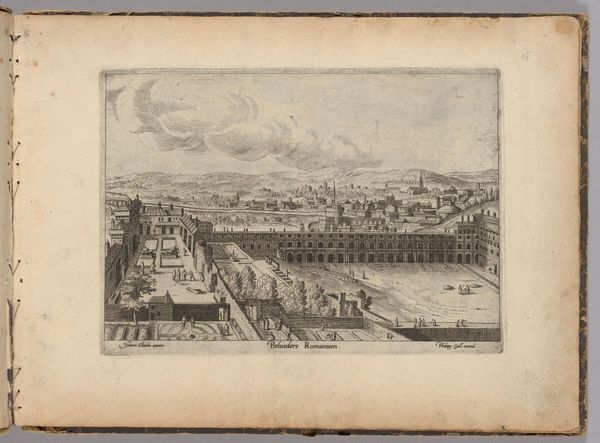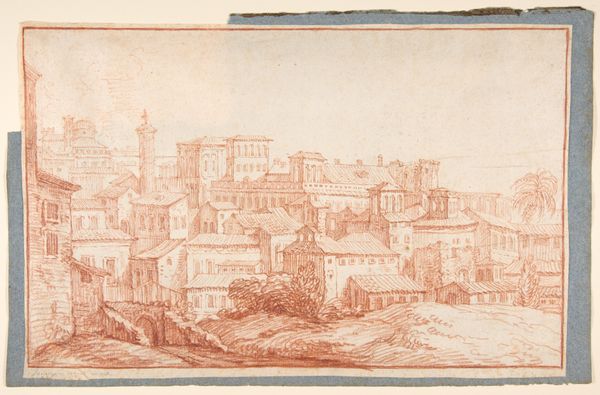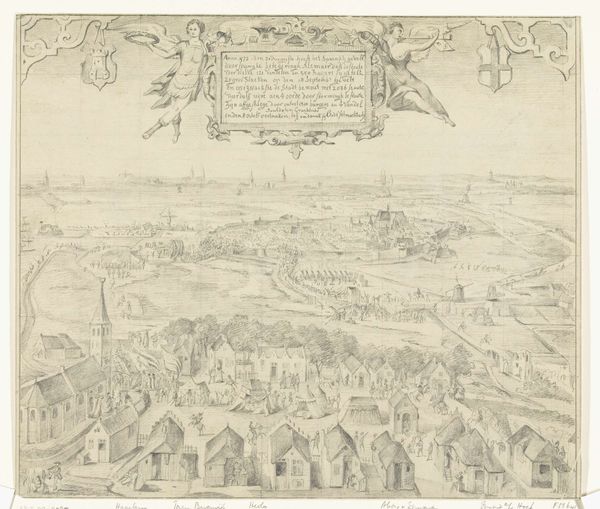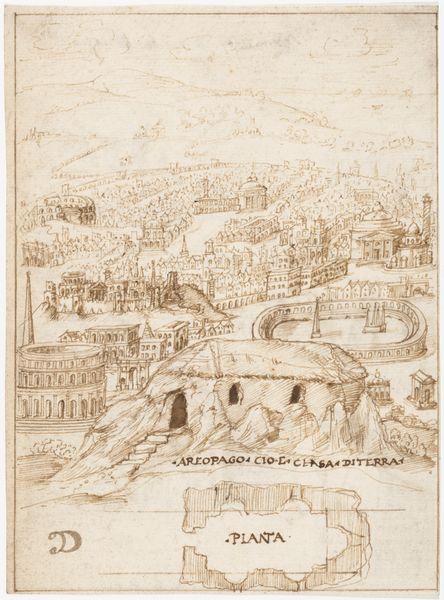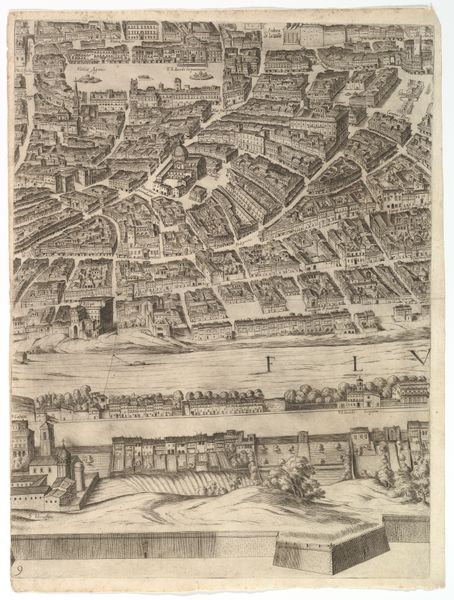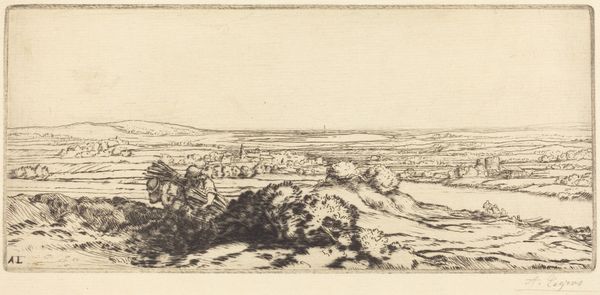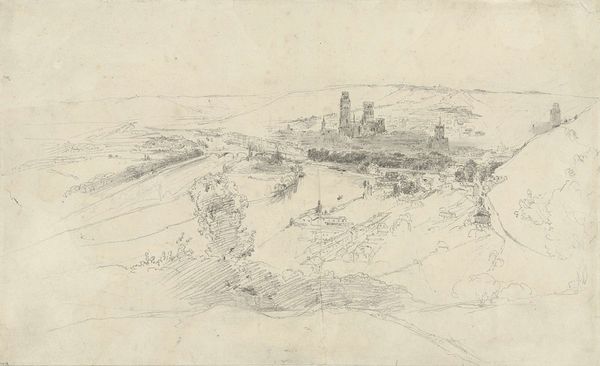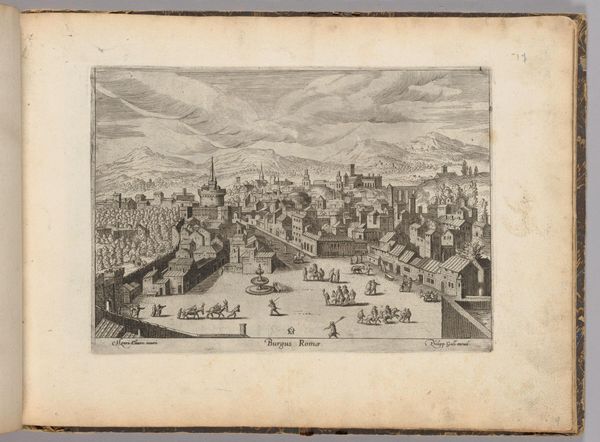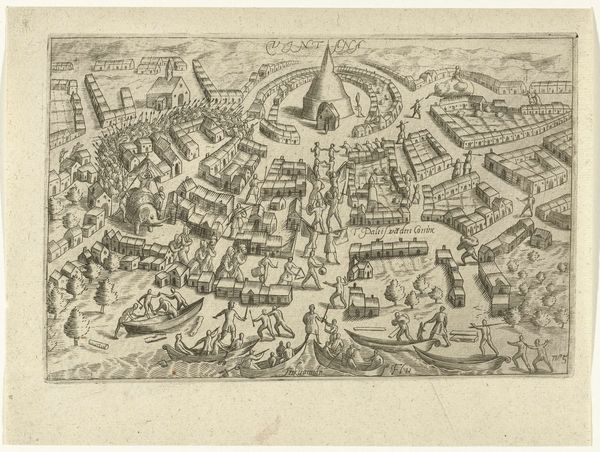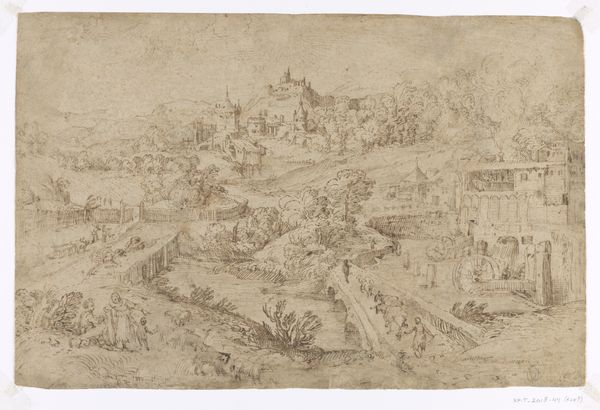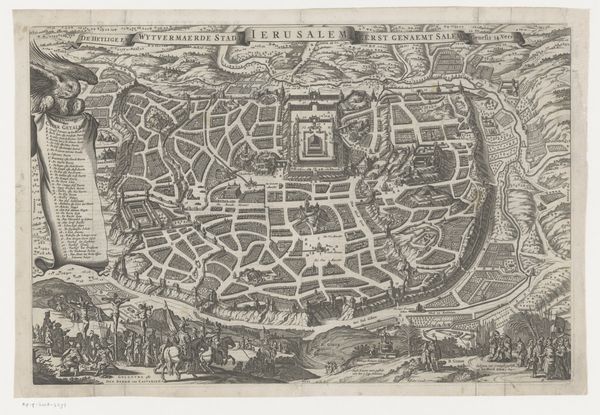
View of Rome from the Janiculum in the South-West; verso: Sketch of buildings and plants 1535 - 1555
0:00
0:00
drawing, print, paper, pen
#
drawing
# print
#
landscape
#
paper
#
11_renaissance
#
line
#
pen
#
cityscape
#
italian-renaissance
Dimensions: Sheet: 51 3/16 × 8 5/16 in. (130 × 21.1 cm)
Copyright: Public Domain
Curator: What a remarkably sprawling and detailed pen and brown ink drawing. This is Anthonis van den Wijngaerde's "View of Rome from the Janiculum in the South-West," created sometime between 1535 and 1555. Editor: My first thought is the sheer labor involved! Look at all those tiny marks building up the architectural forms. It feels like the whole city emerged from countless hours of repetitive, almost meditative, mark-making. Curator: Precisely! Wijngaerde's technique is all about process. The drawing’s inherent value arises, in part, from the immense labor of its making. What impact did such intense labor have on artistic markets of the time? Was it commissioned, and who benefitted from this expenditure of skill and time? Editor: I’m drawn to the social context of the piece, you know? A bird's-eye view from the Janiculum hill – a statement of power, surely! He is placing Rome on display, offering it for consumption. What institutions, what patronage, allowed for such large format views to even exist? Curator: Right, patronage played a major role in determining what kind of images would be produced, the view implies certain institutional forces behind artistic creation, definitely worthy of further investigation. And I can tell you that there’s even a sketch of plants on the back side; a juxtaposition between the urban and the natural, between design and serendipity. Editor: Speaking of serendipity, even the brown ink he uses – it looks like a simple, readily available material, and yet it's used to produce something this monumental! It connects it to a wider history of craft and labor – the artisan practices required to transform it, to even apply to the support medium and so on. Curator: The materiality certainly echoes wider workshop practices in Renaissance Rome. Think of all those draftsmen and assistants churning out architectural plans or decorative schemes! How did this piece fit in alongside the system of artistic labor at that moment? Editor: For me, this piece is evidence of art as a document – recording Rome's evolving urban fabric for contemporary audiences as well as for posterity. A visualization for social remembering. Curator: An impressive visualization, meticulously crafted from commonplace supplies and tireless commitment. Editor: Indeed! A true testament to artistic endeavor informed by material ingenuity, within socio-political forces.
Comments
No comments
Be the first to comment and join the conversation on the ultimate creative platform.

